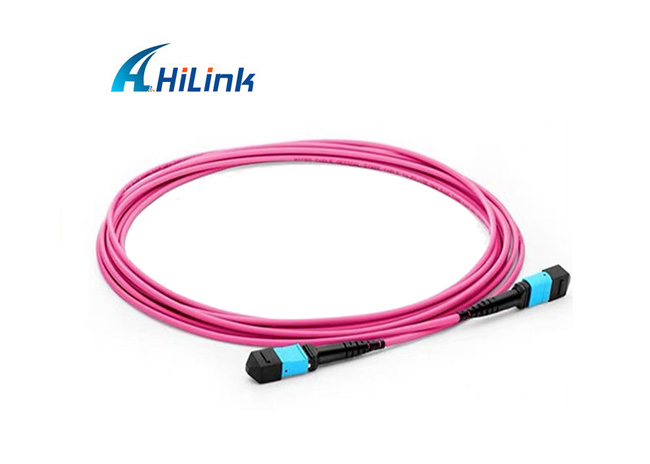Types And Applications of Single-Mode Fiber Optic Patch Cords
Aug. 17, 2021
Fiber optic patch cord cable is a widely used transmission medium in optical transmission, according to the fiber type can be divided into single-mode fiber optic patch cord and multimode fiber optic patch cord, where the single-mode fiber optic patch cord diameter is relatively small, 8μm to 10μm, and is along a straight path for light propagation, will not bounce from the edge, thus completely avoiding dispersion and waste of light energy, so single-mode fiber optic patch cord can achieve lower attenuation so that the signal can be spread faster and farther. Next, the MTP/MPO patch cord cable supplier will share the following content with you.
Types of single-mode fiber optic patch cords
Single-mode fiber optic patch cords can be divided into two types: OS1 single-mode and OS2 single-mode. OS1 adopts tight sleeve construction and is suitable for indoor applications up to 10km, with a maximum attenuation value of 1.0db/km in the 1310nm and 1550nm bands. Both OS1 and OS2 fiber patch cords support Gigabit and 10G Ethernet links, in addition, OS2 fiber patch cords can support 40G and 100G Ethernet links.
Advantages and disadvantages of single-mode fiber patch cords
It should be noted that the advantages and disadvantages of single-mode fiber optic patch cords mentioned here are mainly relative to multimode fiber optic patch cords.

MTP/MPO Patch Cord Cables
Advantages of single-mode fiber patch cable
Transmission distance: Single-mode fiber patch cords can support data transmission over longer distances because of their lower attenuation. For example, the maximum transmission distance of multimode fiber optic patch cords is usually several hundred meters, while single-mode fiber optic patch cords can reach 200km.
Bandwidth capacity: Single-mode fiber patch cords can provide higher bandwidth than multimode fiber patch cords.
Inter-mode dispersion: Single-mode fiber transmits only one mode of light, so it does not have inter-mode dispersion.
Transmission rate: Because there is no inter-mode dispersion, mode noise, and some other effects, single-mode fiber patch cords can transmit signals at higher rates.
Disadvantages of single-mode fiber optic patch cords
Difficult coupling: Because of the small core diameter of single-mode fiber, it is more difficult to couple light into single-mode fiber than into multimode fiber.
Higher cost: Since optical terminators are very expensive, the cost of using single-mode fiber patch cords will be higher than that of multimode fiber patch cords.
More technically rigorous: It is more difficult to manufacture and handle single-mode fibers than dual-mode fibers.
Applications of single-mode fiber patch cords
Single-mode fiber patch cords are suitable for long-distance, high bandwidth data transmission and cabling environments requiring low loss. Therefore, single-mode fiber patch cords are widely used in communication networks, high-speed metro access networks, and networks supporting high-speed video, data, and voice services. It can be divided into the following four main cases according to different types.
Application Scenarios
Conventional/standard single-mode fiber-optic - metro and access networks
Negative non-zero dispersion-shifted fiber - metro and medium distance networks
Positive non-zero dispersion-shifted fiber - long-distance and high-speed metro networks
High positive non-zero dispersion-shifted fiber - high speed, high capacity, relay-free submarine networks











